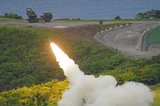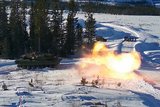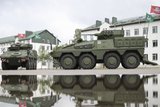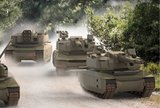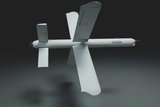India test fires MRSAM
India has successfully conducted the test firing of a Medium Range Surface-to-Air Missile (MRSAM) at its integrated test range off the coast of Odisha, India, the Ministry of Defence announced on 30 June.
The missile was guided by a radar system and on-board avionics to successfully strike a pilotless target aircraft.
The MRSAM has been developed by India's Defence Research and Development Organisation (DRDO) in association with IAI of Israel for the Indian Air Force. Indian companies including Tata, BDL, L&T and BEL have contributed to the development of subsystems.
Israel and Indian teams participated in the launch campaign.
The MRSAM system has been designed to provide air defence at medium ranges. The successful test firing is a significant milestone in India's development of air defence capabilities.
More from Land Warfare
-
Germany signs multi-billion-dollar deals for 6x6 CAVS and GDELS Eagle vehicles
The order is a further boost for the Common Armoured Vehicles System programme which has notched notable successes in the past 12 months. The first vehicle, made in Finland, will be delivered next year with local production expected to ramp up in 2027.
-
![Rheinmetall and KNDS tank tie-up narrows trans-European options]()
Rheinmetall and KNDS tank tie-up narrows trans-European options
The French and German governments signed an agreement in June 2018 to cooperate on the development of a new main battle tank under the Main Ground Combat System programme but the effort has struggled. This new agreement may damage it further.
-
![Hungary set to begin using Hero 400 loitering munitions]()
Hungary set to begin using Hero 400 loitering munitions
Developed by Israel's Uvision and with systems being sold in the thousands to multiple European NATO countries and the US, the Hero family of loitering systems is also in production in the US and Italy, the latter through Rheinmetall.
-
![Light Reconnaissance Strike – enabling a vital mission set (Studio)]()
Light Reconnaissance Strike – enabling a vital mission set (Studio)
A new system-of-systems concept will unlock digital integration of sensors and weapons for Light Forces, allowing them to shape the battlefield environment on their own terms and upgrade legacy platforms.










